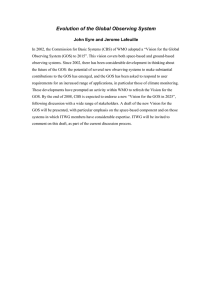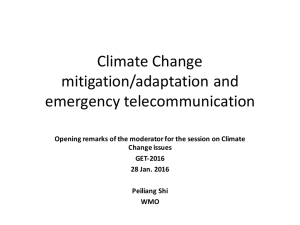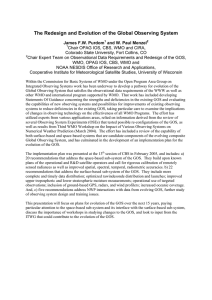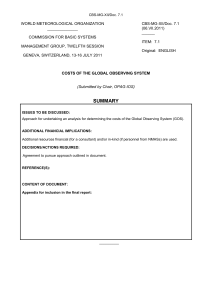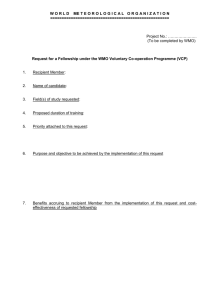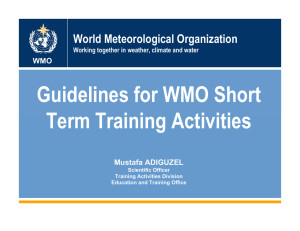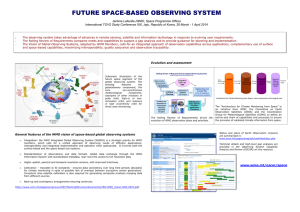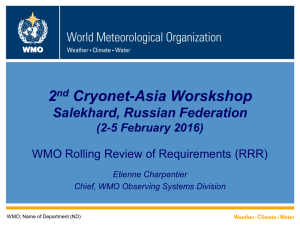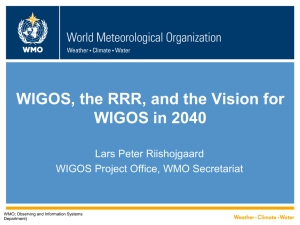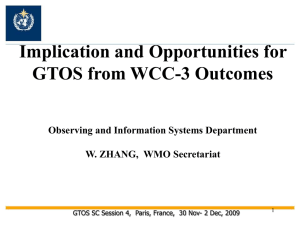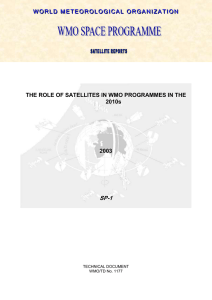Future Space-based Observing System General features of the WMO
advertisement
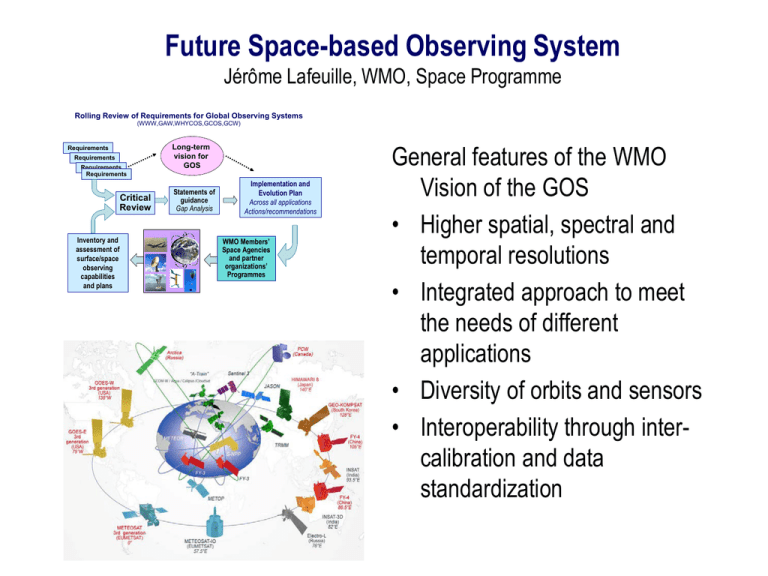
Future Space-based Observing System Jérôme Lafeuille, WMO, Space Programme Rolling Review of Requirements for Global Observing Systems (WWW,GAW,WHYCOS,GCOS,GCW) Requirements Requirements Requirements Requirements Critical Review Inventory and assessment of surface/space observing capabilities and plans Long-term vision for GOS Statements of guidance Gap Analysis Implementation and Evolution Plan Across all applications Actions/recommendations WMO Members’ Space Agencies and partner organizations’ Programmes General features of the WMO Vision of the GOS • Higher spatial, spectral and temporal resolutions • Integrated approach to meet the needs of different applications • Diversity of orbits and sensors • Interoperability through intercalibration and data standardization A snapshot on the vision / actual implementation • Upcoming new GEO imagers: Himawari-8, GOES-R, FY-4, Electro-M, GEOKompsat-2A, MTG-I. User preparation needed ! Sounders: from GOES & INSAT3D to FY-4 and MTG-S Lightning mappers Geostationary component • • • VIS/IR imagery IR hyperspectral Lightning imagers Core sun-synchronous component imagery and sounding • • • • • • • Other missions: MW imagery Altimetry, scatterometry Radio-occultation Global Precipitation Atmospheric composition Earth Radiation Budget Multi-directional viewing IR imager • • • • Hyperspectral: IASI, CrIS, HIRAS FY-3 on early morning (TBC) • • • • • GCOM-W Jason-3, Sentinel-3 GPM-Core, FY-3 RM (TBC) COSMIC-2 HY-2 and Oceansat-2 Data accessibility … www.wmo.int/oscar/space
